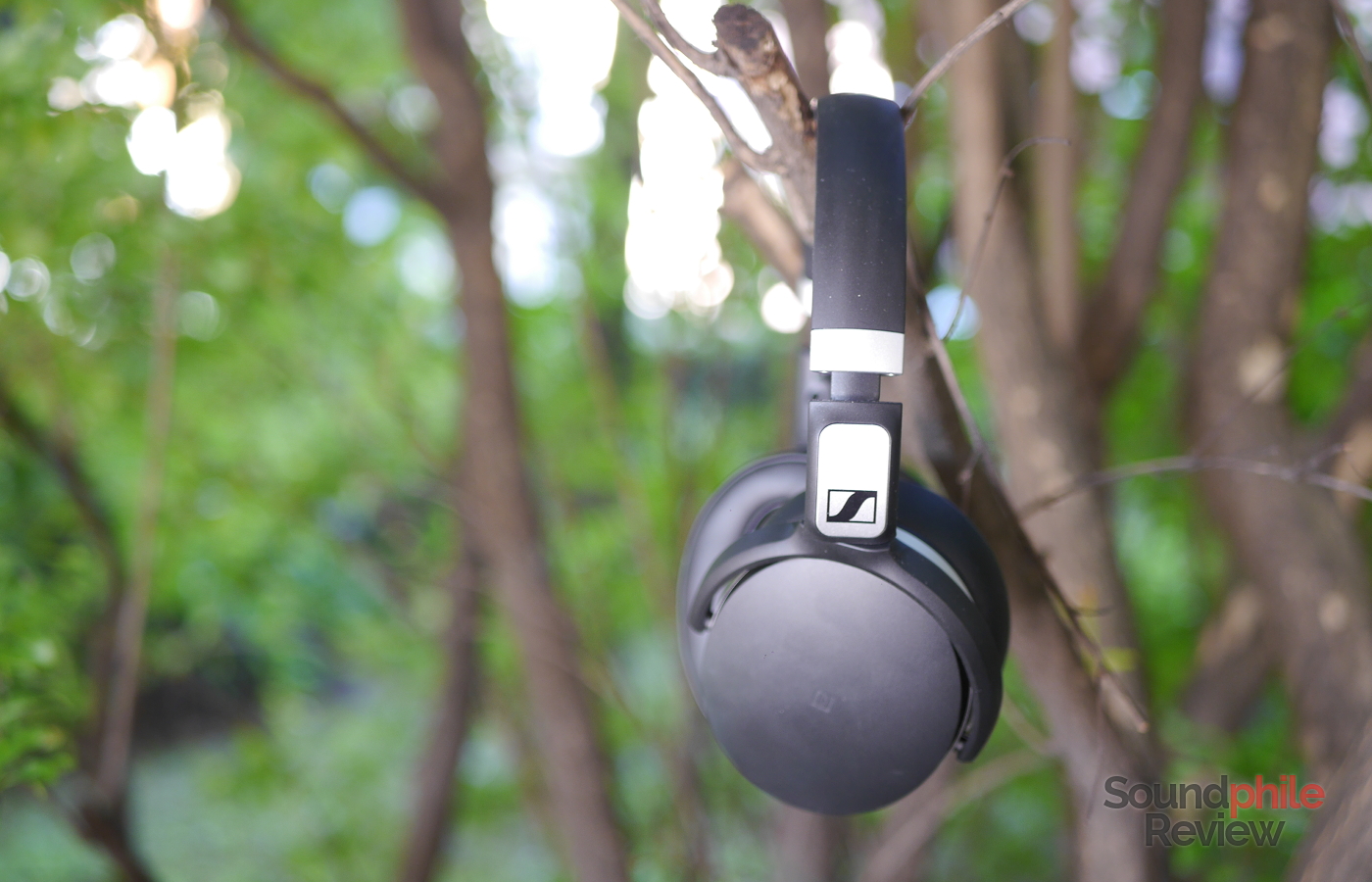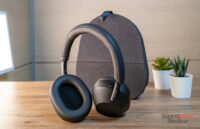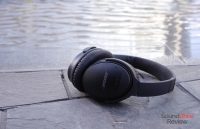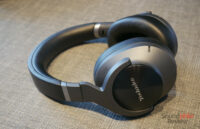The headphone market is thriving and the noise cancelling niche is ever growing, with competition stiffening every new day. Sennheiser introduced their HD 4.50 BTNC Bluetooth noise cancelling headphones back in September 2016, during IFA. They aim at the entry-level noise cancelling market, but let that fool you not: the Sennheiser HD 4.50 BTNC are in no way an entry-level pair of headphones.
They are in fact a competent and compelling product that has lots of features to offer, together with a few quirks and caveats.
Disclaimer: the local Sennheiser press office loaned me the unit I tried and I returned it. You can learn more about them on Sennheiser’s website.
TL;DR: recap
| Pros |
Cons |
| Good comfort
Minimal design Mostly neutral sound One of the most affordable NC headphones NoiseGard can be disabled |
NoiseGard negatively influences sound
Little passive isolation A bit more padding in the headband would be welcome 2.5-mm, proprietary cable |
Rating: 8/10
Packaging & Accessories
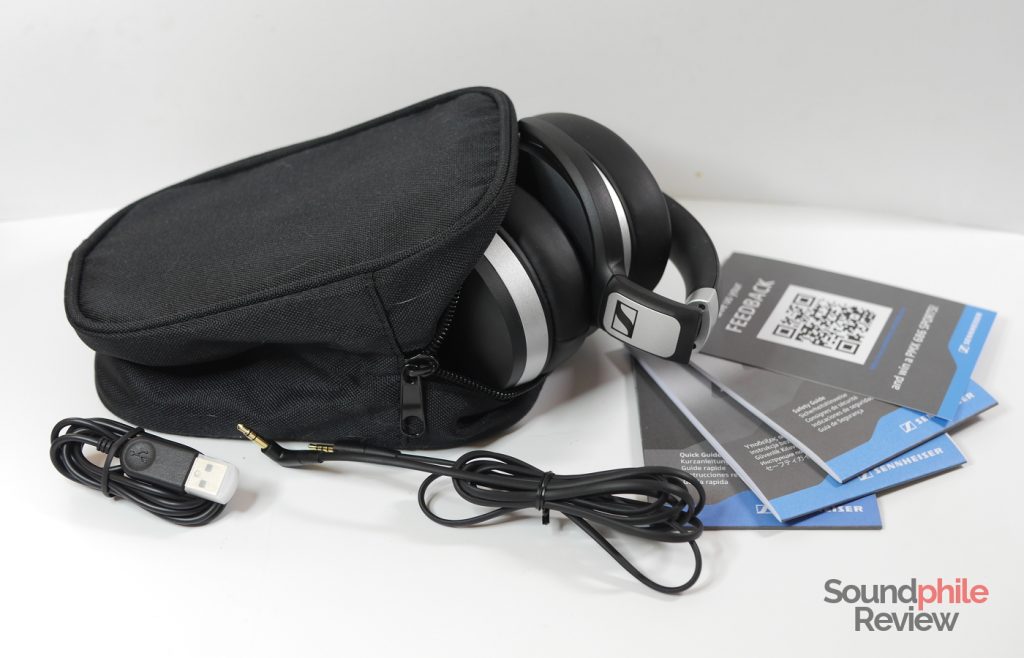
The Sennheiser HD 4.50BTNC comes with a rich set of accessories: the box includes the headphones, a 1.2-m long 2.5 mm to 3.5 mm jack cable, a USB to micro-USB cable and a soft fabric case. There are also a manual and a warranty leaflet.
Design & Comfort
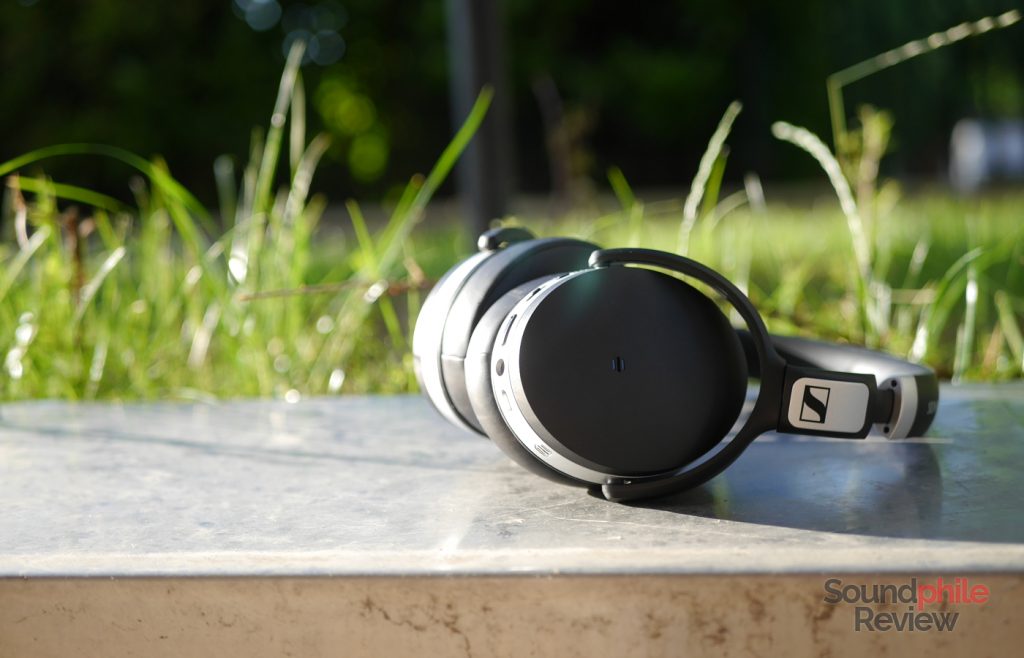
Design is utilitarian, so you won’t find fancy leather inserts or peculiar design choices here. It’s a “barebone” (although not too much) approach which I find appealing; it’s very simple and this means it will suit most people’s tastes. The HD 4.50 BTNC is completely black, with silver details and the Sennheiser logo in white on the headband. The overall lines are very similar to those used on the other Sennheiser HD headphones – i.e. the Sennheiser HD 2 – although they’re slightly more refined.
Both the headband and the earpads are covered in synthetic leather, with the headband padding which is almost seamless with the plastic top. Plastic is the main ingredient here, with the frame and the earcups made from this material. Everything is black or silver, with a matte finish.
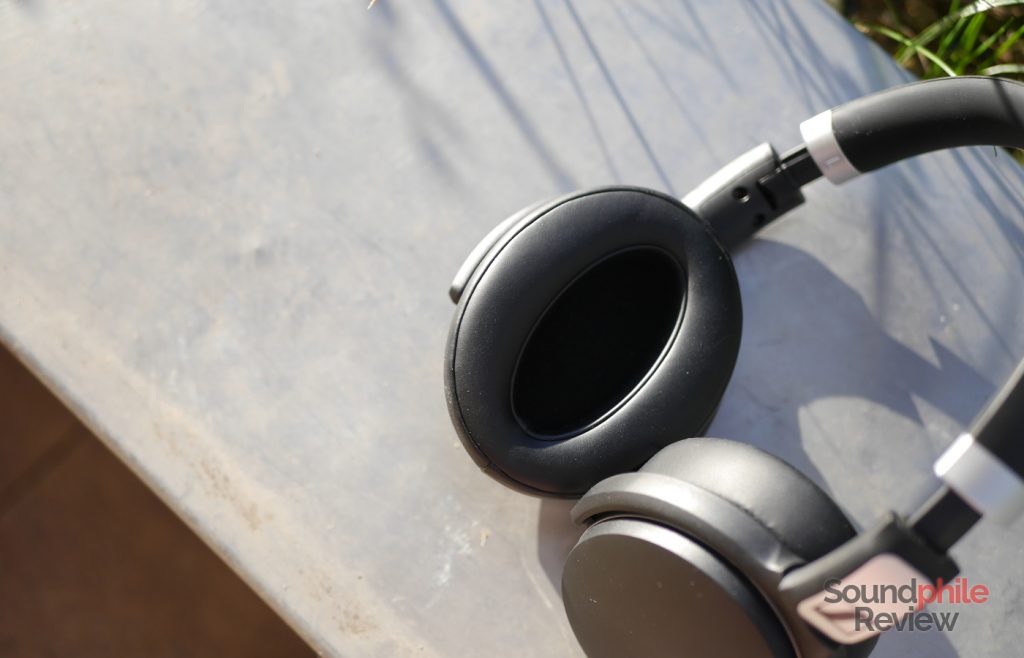
Sennheiser didn’t spare the lining in the earpads: they’re thick and soft, which makes for a very comfortable fit. The hole is wide enough to let my (sufficiently large) ears fit and therefore grant lasting comfort. The headband padding could actually be increased to improve comfort in the long run.
They’re foldable, although they are still fairly large even when folded. They can fit effortlessly in most bags or backpacks, although I found it more convenient to just wear them around my neck when I didn’t use them.
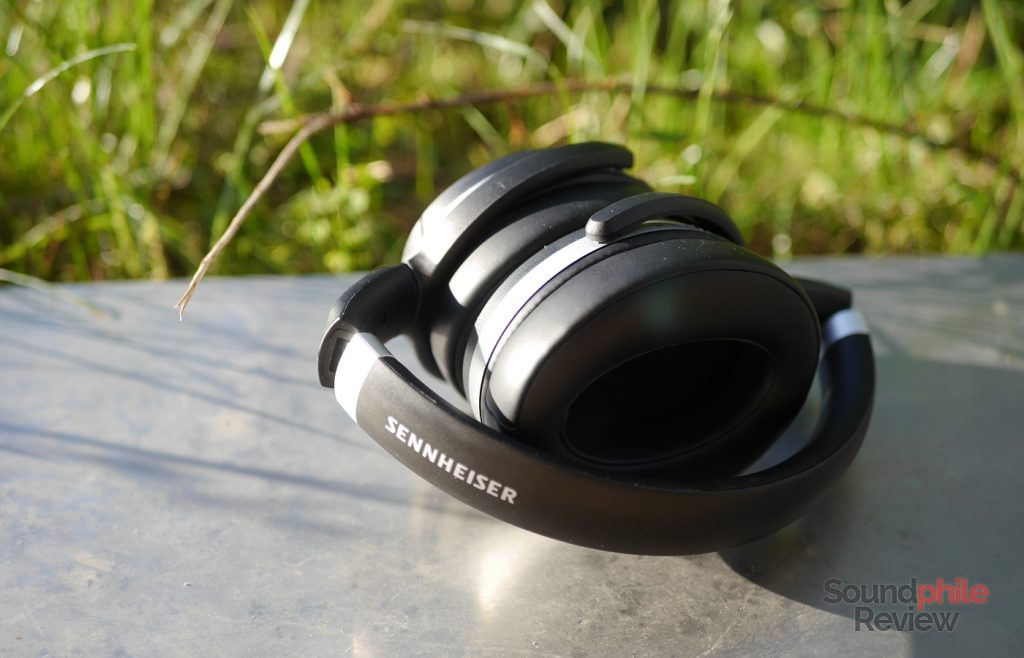
All the buttons, controls and ports are hosted on the right earcup. There are a power button, a status LED, a slider button, a micro-USB port and a 2.5-mm jack connector. The cable has a lock mechanism: once plugged in, it can be twisted and locked in position. This way it is comparable to a wired headphones’ cord – it just won’t pop off. This approach has pros and cons, since there is a chance it will damage the headphones if too much force is applied, contrary to a simple jack. You won’t also be able to use other cables if you lose the one provided.
The slider button allows to skip tracks, when moved up or down, and to play or pause music when pressed. It takes a fair bit of time to get used to it and I often skipped tracks when trying to pause music. It is also easy to mistake it for the power button, but pressing the latter won’t trigger any action (unless you keep it pressed, that is).
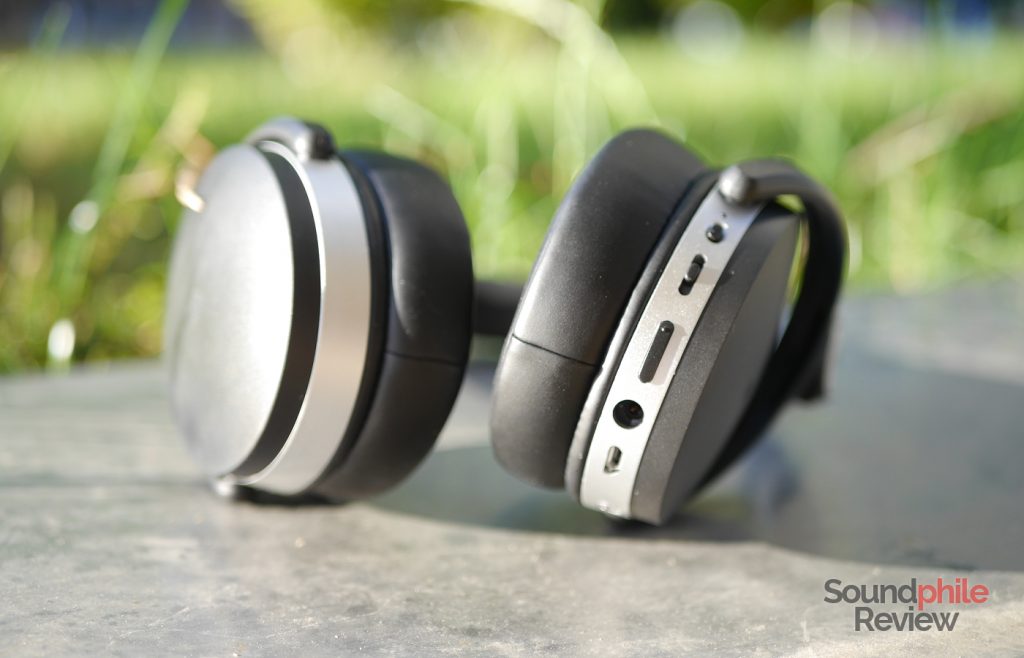
Comfort is just average, mainly due to two factors: the padding in the headband and its size. The padding is soft, but it’s thin. Another factor is the headband being narrow, as it means a lot of pressure is concentrated on a small area and this makes comfort in the long term (>2h) decrease.
Although the Sennheiser HD 4.50BTNC offer noise cancelling, they’re definitely not noise-proof. The earcups offer minimal passive isolation, so almost all noise will creep in – be it a person walking or a car passing by. I have to note this is my personal experience, which could be influenced by my very own head’s and ears’ shape. In most occasions you will want to have noise cancelling enabled, but this has a few unexpected and unwanted consequences as we’ll see later.
Extra Features & Battery Life
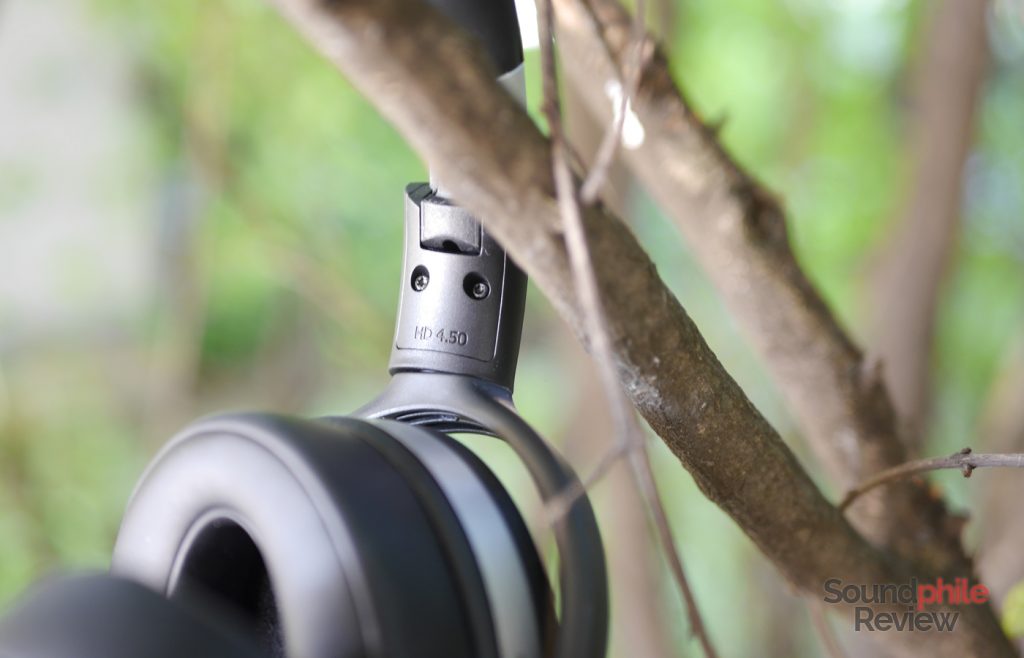
The name Sennheiser HD 4.50BTNC has an explanation: BT stands for “Bluetooth” and NC stands for “noise cancelling”. The proprietary technology behind this last element is called NoiseGard and it is Sennheiser’s implementation of noise cancelling. As almost every NC tech currently out there, it only removes the low-frequency noise, such as the noise coming from a jet’s engines or the rattling of a train. Human voices and other relatively high-pitched sounds are excluded and you’ll hear them.
NoiseGard is very effective and it does a great job at blocking noise. I could barely hear anything with it enabled, even in the subway. It can be disabled, and this is a huge pro. You only need to press both volume up and volume down buttons at the same time to disable it and this comes in quite handy if you want to enjoy your music without noise cancelling.
When a call is ongoing, the microphones capture the surrounding sounds and reproduce them so that the user isn’t completely isolated. Problem is the other person is going to hear all sounds, too, and this may be in fact a bit distracting. The microphone is luckily able to pick up the voice very effectively, so I was always heard clearly by the person I was calling.
The Sennheiser HD 4.50BTNC make use of the aptX codec on top of the Bluetooth 4.0 standard, which should grant better sound quality when they’re paired with Android phones, Windows PCs and (maybe) Macs. iPhones do not support the codec. They also support NFC for quick pairing.
When it comes to battery life, Sennheiser claims it is 19 hours with NoiseGard active and 25 hours with the feature disabled. This figures are mostly true to real life, although they’ll vary with different usage scenarios (i.e. I always listen to music at low volumes).
Sound & Specs
I ran a 100 hours break in on the headphones, which were new when I received them. I used both my smartphone (Lenovo Vibe Shot) with Bluetooth and my desktop (with Topping D30 > Topping A30 stack) with the cable. Source files were mainly FLACs (mostly 16 bit, 44.1 kHz) and a few MP3s (320 kbps) here and there.
Sennheiser HD 4.50BTNC |
| Frequency response |
18 – 22,000 Hz |
| Impedance | 18 Ω |
| Sensitivity | 113 dB |
NoiseGard has a huge impact on the sound of the Sennheiser HD 4.50BTNC and it’s not a positive one either. While the technology works by producing negative sound waves to counter the sound coming from outside, and it only influences low frequencies, it should not affect how the sound is reproduced too much. Practice is quite different from theory, though, and the lows and mid-lows are almost completely cut off when NoiseGard is on. Songs sound shallow and thin more often than not, unless they come with a remarkable amount of bass.
Disabling NoiseGard makes fuller sound come back, almost to the extent that they seem different headphones. Given the enormous influence the noise cancelling technology has over sound, I decided to write the review basing it on the sound without NoiseGard.
Given these are over-ear, closed-back headphones, soundstage is not the widest. It is, in fact, very wide for a Bluetooth headphone, and this is great. It is also fairly easy to tell instruments apart, even in relatively dense tracks (Blue Train by John Coltrane comes to my mind).
Lows do not dive too deep, but they’re very entertaining and add body to the music in the right way. Although you won’t feel the lowest frequencies in Daft Punk’s End of Line from the TRON: Legacy soundtrack, bass has decent extension and the right amount of control for it to be fun and engaging. Transients are very good for a headphone in this price territory and beyond what I expected from it. Bass doesn’t leak in midrange territory and it stays tamed, sometimes leaving you with a desire for a bit more. It fulfils its role of adding body and keeping the rhythm, but it’s far from being the protagonist (as seen on the Plantronics BackBeat Pro 2, as an example). If you take just a bit of it away it becomes anaemic, and that’s exactly what happens when you turn noise cancelling on.
Midrange is the heart and soul of the Sennheiser HD 4.50BTNC’s sound. It’s front and centre, with a vivid signature that makes guitars, pianos, sax and voices stand out. There’s good liveliness and airiness, which make the midrange engaging and natural. Mids appear mostly flat, just a bit warm; the detail and clarity are nothing to write home about, but they’re great nonetheless for the price. The carefully mixed blend of bass, midrange and treble, where mids get the lion’s share, makes it very pleasant to listen to classical music on the HD 4.50BTNC.
I expected treble to be more extended, but it actually is fairly limited. It makes up for that with a good level of detail and a sense of freshness. It’s not sparkling and exuberant, neither it is analytic and airy; it does its job, however, in bringing a bit of brightness to the sound and in portraying high-pitched instruments (i.e. cymbals). They have their room to breathe and they’re not just in the background.
When it comes to genres that pair well with the Sennheiser HD 4.50BTNC, I would say that these could play most genres, but they also carry a caveat: they won’t sound perfect with any genre. Their performance is impressive with jazz and neofolk, but there are better headphones out there for a similar price. If you aren’t looking for boomy, explosive bass these headphones are worth listening to.
The Sennheiser HD 4.50BTNC don’t hold up against the Sony MDR-1000X, which share most of the features but sound arguably better and offer better passive isolation and better noise cancelling. I guess the fact they’re double the price has something to do with that. When it comes to the aforementioned Plantronics BackBeat Pro 2, though, we see two very different approaches to music reproduction: one is trying to be faithful to the original and yields results an audiophile would appreciate; the other is instead trying to focus on the fun and enjoyment side of music and offers a boomy sound which can most likely satisfy the young and the non-audiophile. It all boils down to what you are looking for, as those products are in different categories.
Final Thoughts
I would say the Sennheiser HD 4.50BTNC is best described by an English expression: jack of all trades, master of none. These headphones get good scores in every field, but they don’t excel in any of them. Be it in noise cancelling, comfort, build, or sound, the HD 4.50BTNC are not able to deliver excellence in any of those.
This is not a bad thing at all, though. It means that the HD 4.50BTNC does well in every field and thus is a complete, competent headphone that can suit most people’s needs and tastes. It sounds good and provides good noise cancelling, even though it has a few flaws, and this makes them easy to recommend. There are better alternatives out there (i.e. MDR-1000X), but they also cost much more. Being a jack of all trades sometimes pays off.
The Sennheiser HD 4.50BTNC retails for $199.95.

